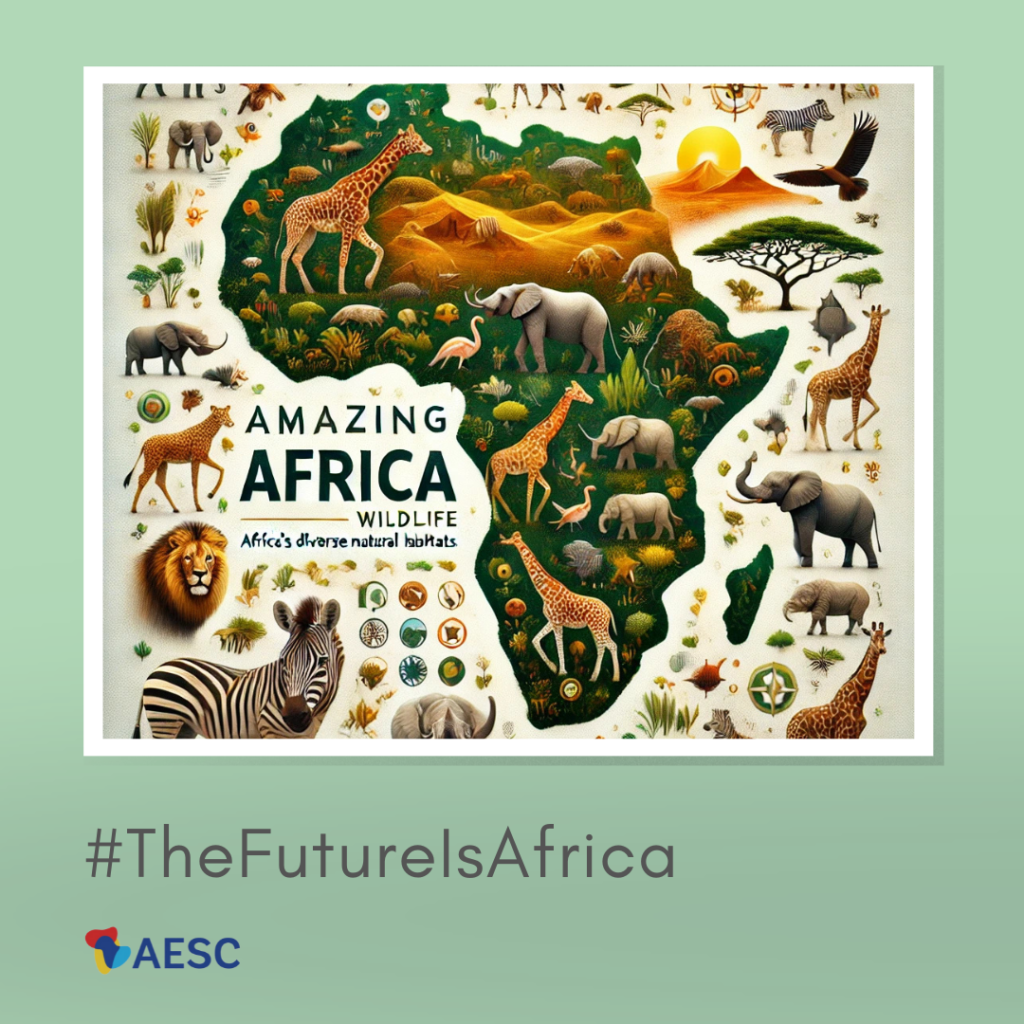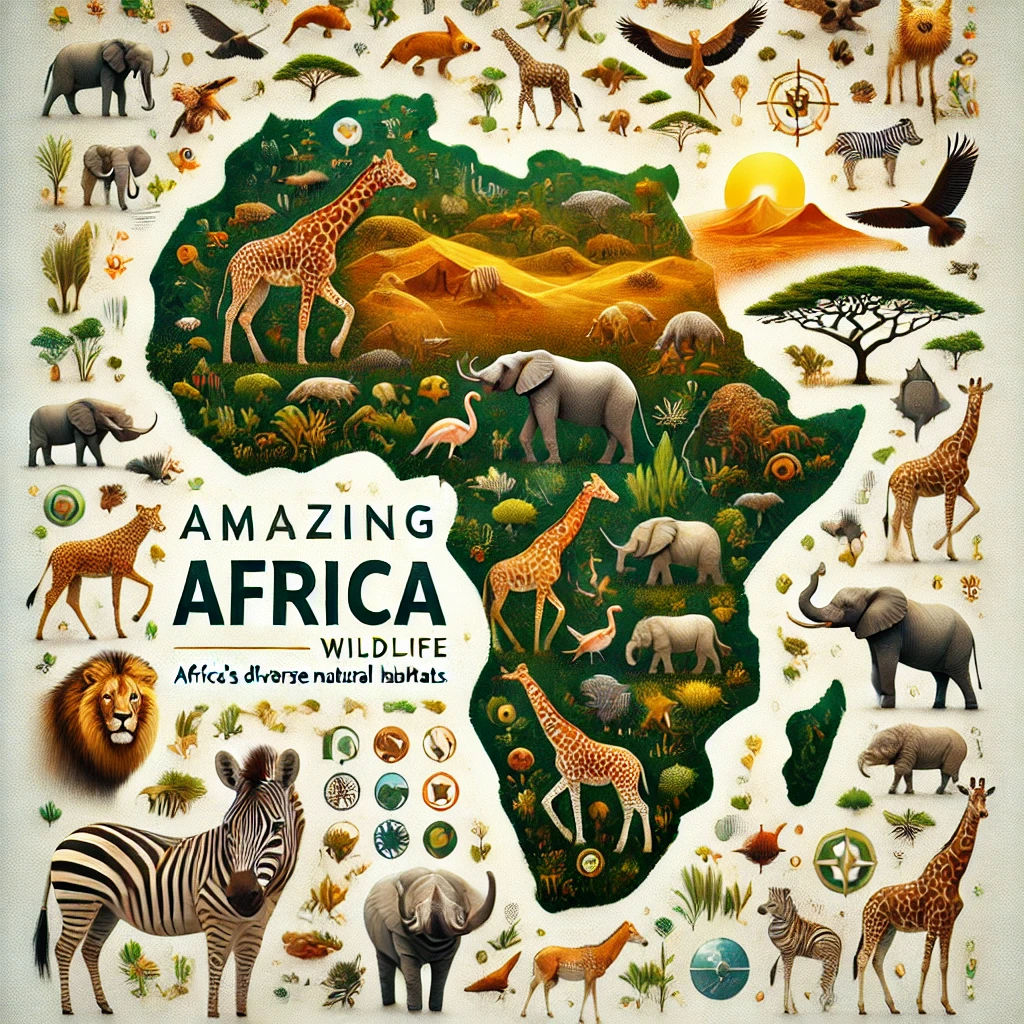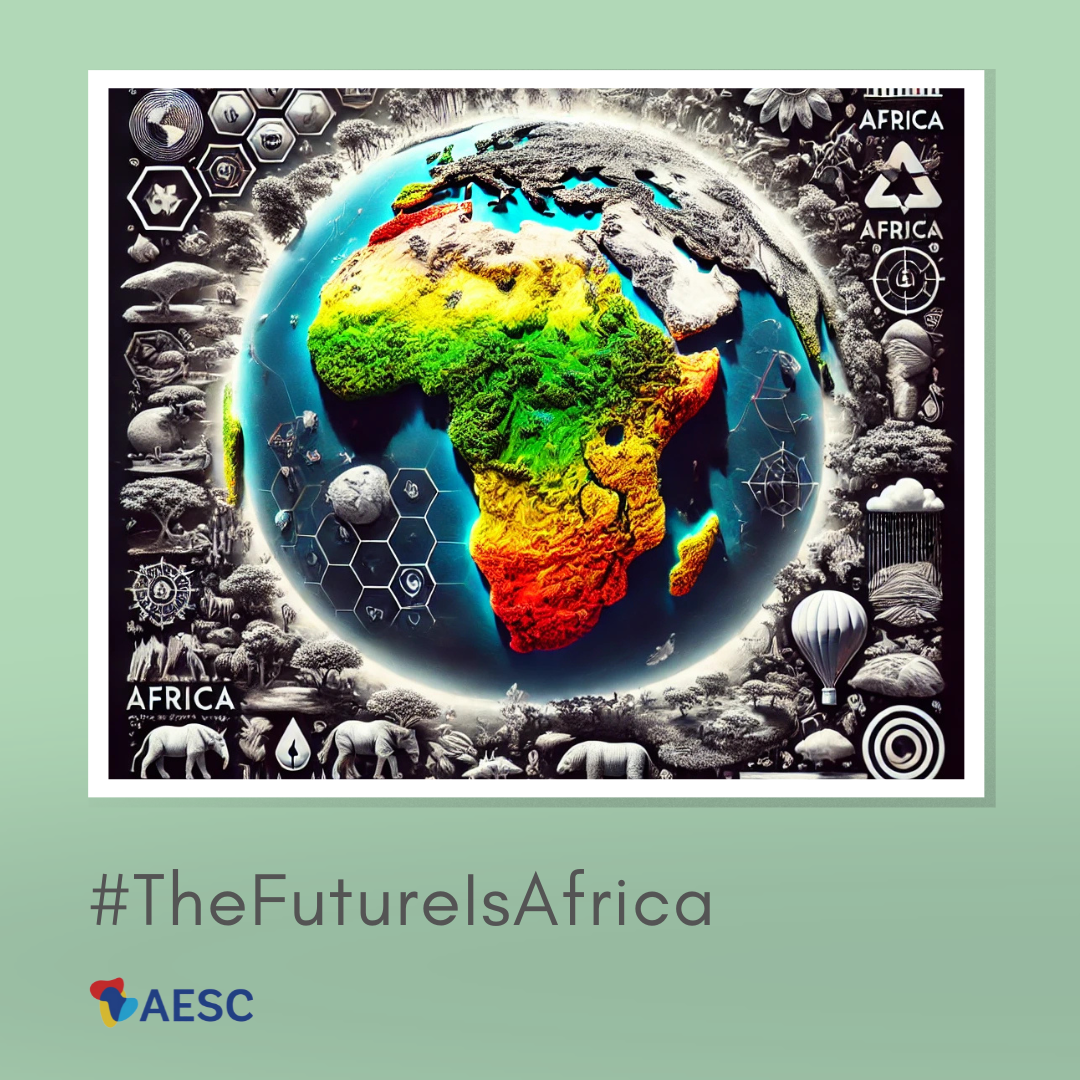
Africa’s Amazing Wildlife: A Pillar for Conservation and Economic Development
Africa’s wildlife is unparalleled, making it a global treasure and a critical component of the continent’s identity, culture, and economy. As the home to an astonishing array of species—including 1,100 species of mammals and over 2,600 species of birds—Africa boasts some of the most diverse and breathtaking natural habitats on the planet. From giraffes and zebras roaming the savannas to hippopotamuses and crocodiles inhabiting the continent’s rivers, Africa’s ecosystems are teeming with life. In addition, Africa is renowned for hosting the iconic ‘Big Five’—lions, leopards, rhinoceroses, elephants, and buffalo—which are central to its wildlife tourism industry. As nations across the continent work to preserve, protect, and showcase these incredible creatures, Africa’s role in global wildlife conservation becomes increasingly vital, not only for ecological balance but also as a major driver of economic growth and sustainable development.
1. The Rich Biodiversity of Africa’s Wildlife: A Global Treasure
Africa’s wildlife is diverse and vibrant, supporting ecosystems that range from the tropical rainforests of the Congo Basin to the arid deserts of the Sahara and the vast grasslands of the Serengeti. This ecological diversity provides habitats for a wide array of species, many of which are found nowhere else on Earth. The continent is home to iconic mammals like giraffes, zebras, antelopes, and hippopotamuses, all of which play crucial roles in maintaining the balance of their respective ecosystems.
The ‘Big Five’—a term originally coined by big-game hunters referring to the five most challenging animals to hunt on foot—has evolved into a symbol of conservation and ecotourism. Today, seeing lions, leopards, rhinoceroses, elephants, and buffalo in their natural habitats is a bucket-list experience for millions of tourists worldwide. The presence of these majestic animals in African countries like Kenya, Tanzania, South Africa, and Botswana not only demonstrates the continent’s rich biodiversity but also underscores the importance of protecting these species for future generations.
In addition to the Big Five, Africa is also home to a multitude of bird species, including the African fish eagle, flamingos, and the colourful lilac-breasted roller. This avian diversity adds another layer of wonder to Africa’s natural landscape, attracting birdwatchers and researchers from across the globe. The sheer variety of wildlife in Africa highlights the continent’s unique position as a global leader in biodiversity, making its conservation efforts critical to the health of the planet’s ecosystems.
2. Wildlife Conservation: A Vital Role for African Nations
Africa’s wildlife is not only a source of awe and inspiration but also an area of responsibility. African nations play a crucial role in global conservation efforts, actively working to protect endangered species and restore habitats that have been threatened by human activities, climate change, and poaching. Conservation initiatives across the continent aim to preserve the delicate balance of these ecosystems, ensuring that Africa’s incredible biodiversity is protected for generations to come.
Many African countries have established national parks, wildlife reserves, and conservation areas to safeguard their wildlife. The Serengeti National Park in Tanzania, the Kruger National Park in South Africa, and the Maasai Mara National Reserve in Kenya are just a few examples of protected areas that serve as sanctuaries for numerous species. These parks are not only vital for preserving ecosystems but also play a key role in scientific research, offering a living laboratory for studying animal behaviour, migration patterns, and ecological interactions.
Anti-poaching efforts are central to Africa’s conservation strategies, particularly for species like elephants and rhinoceroses, which are targeted for their tusks and horns. Countries such as Botswana and Namibia have implemented community-based conservation models, where local communities are empowered to protect wildlife while benefiting from tourism revenue. By engaging local populations, these programs foster a sense of ownership and responsibility, making conservation a shared and sustainable endeavour.
Partnerships with international organizations and NGOs also play an essential role in bolstering Africa’s conservation efforts. Organizations like the World Wildlife Fund (WWF) and African Parks collaborate with governments to fund anti-poaching units, rehabilitate habitats, and relocate endangered species to safer regions. These efforts not only protect animals but also support local economies by ensuring that wildlife tourism remains a viable and sustainable industry.
3. The Economic Power of Wildlife Tourism
Africa’s wildlife is more than an ecological asset; it is a major economic driver. Wildlife tourism, which includes safaris, birdwatching, and ecotourism, attracts millions of visitors from around the world each year. According to the World Travel and Tourism Council, tourism accounted for nearly 8.5% of Africa’s GDP in 2019, with a significant portion of this revenue generated by wildlife tourism. Countries like Kenya, Tanzania, South Africa, and Botswana have developed thriving tourism industries centred around their rich wildlife, providing a major source of income and employment for local communities.
The opportunity to see Africa’s iconic animals in their natural habitats is a powerful draw for international tourists. Safari tours, which offer visitors the chance to witness the migration of wildebeest in the Serengeti or track the elusive leopard in the Okavango Delta, generate billions of dollars in revenue annually. This influx of tourists supports hotels, restaurants, tour operators, and various other businesses, creating a ripple effect that stimulates broader economic development.
Ecotourism, which emphasizes sustainability and environmental protection, is also growing across Africa. This form of tourism focuses on low-impact, environmentally responsible travel that benefits local communities and wildlife conservation efforts. Lodges and camps are increasingly being designed to minimize their ecological footprint, using renewable energy sources, waste recycling systems, and eco-friendly building materials. Tourists are not only paying for the experience but are also contributing to conservation efforts, as a portion of their fees goes directly to protecting wildlife and maintaining natural habitats.
4. The Role of Communities in Conservation and Wildlife Protection
One of the most effective aspects of Africa’s wildlife conservation efforts is the involvement of local communities. Across the continent, community-based conservation initiatives are transforming wildlife protection into a collaborative effort that benefits both people and animals. Programs such as Namibia’s Communal Conservancies and Kenya’s Maasai Mara Wildlife Conservancies Association involve local populations in the management of wildlife reserves. These initiatives empower communities to become stewards of their own natural resources, giving them a stake in the economic benefits of conservation and wildlife tourism.
By integrating conservation and community development, these initiatives provide sustainable livelihoods for rural populations. Communities that once saw wildlife as a threat to their crops or livestock are now viewing animals as valuable assets that attract tourists and generate income. This shift in perspective is crucial for the long-term sustainability of conservation efforts, as it ensures that wildlife protection is seen as a mutual benefit rather than an external imposition.
Furthermore, these community-driven models are proving to be highly effective in reducing poaching and human-wildlife conflict. By training local rangers and creating wildlife monitoring systems, these programs help deter illegal hunting activities while fostering coexistence between people and animals. The success of these initiatives demonstrates the importance of grassroots involvement in conservation efforts and highlights Africa’s innovative approaches to preserving its wildlife heritage.
5. The Future of Wildlife Conservation in Africa: Challenges and Opportunities
While Africa’s wildlife holds immense potential for conservation and economic growth, the continent faces challenges that must be addressed to ensure the future of its biodiversity. Climate change, habitat loss, and illegal poaching remain significant threats that require coordinated and sustained efforts. Addressing these challenges will involve continued international collaboration, investment in conservation technologies, and the expansion of protected areas.
At the same time, Africa’s conservation successes provide a blueprint for the future. The increasing trend toward ecotourism and sustainable practices offers a model for how wildlife can be preserved while contributing to economic development. By investing in education, infrastructure, and local partnerships, African nations are well-positioned to not only protect their wildlife but also to lead global efforts in biodiversity conservation.
Conclusion
Africa’s amazing wildlife is a testament to the continent’s natural wealth and ecological importance. From its diverse species of mammals and birds to the iconic Big Five, Africa’s ecosystems are vital for global biodiversity. The continent’s commitment to wildlife conservation, supported by community involvement and international partnerships, not only preserves its natural heritage but also generates significant economic benefits through tourism. As Africa continues to showcase and protect its wildlife, it secures its position as a leader in conservation and a key destination for nature enthusiasts worldwide.



